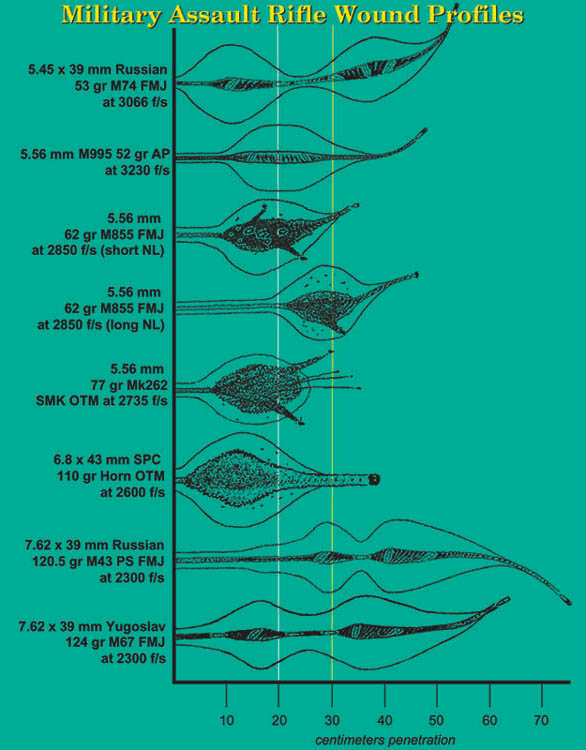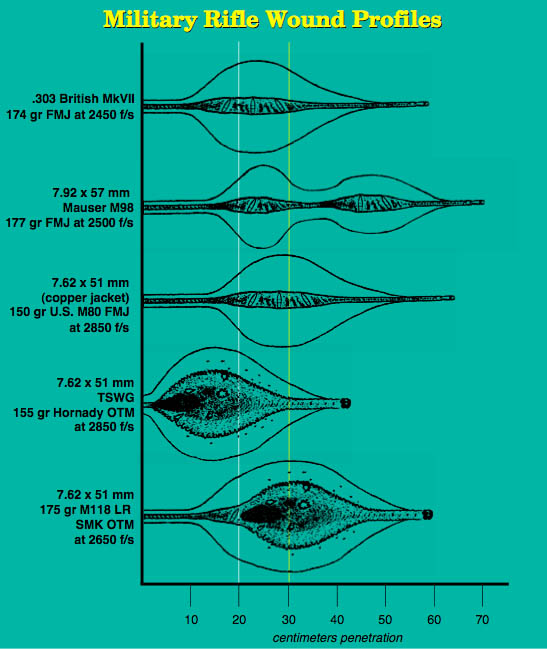I'm not playing these calibers off against each other, just looking at it from the standpoint of a shooter who has multiple AR's in 5.56, bolt action rifles in 7.62, and wants to add a heavier caliber semiauto "MBR" type of battle rifle to the collection. Currently unable to afford both, but I'd like to start with an MBR for range shooting up to 600 yards, deer hunting (if I can keep it under 10 lbs), and of course defensive or "SHTF" operations.
I know the 6.8 does fine at deer hunting and range work, and the ballistics programs indicate it's good for paper punching up to 600 yards. But my questions are mostly on how the 6.8 compares to 7.62 as a battle round.
* Within that first 600 yards (which is probably the useful/practical range of the 6.8), how well does the 6.8 compare to the 7.62 at typical combat applications: CQB work, sniping, penetrating light cover, etc.? would the 7.62 likely be a lot more effective at things like penetration of cover within the first 300 yards? Are there any published studies by the military or anyone else comparing these rounds?
* What about beyond 600 yards? Obviously 7.62 NATO can still be effective out to 800 or even farther, depending on shooter, rifle, and glass. But is it possible to extend the effective range of 6.8 beyond 600 yards, if you have to?
* What do you think? If you had to pick 6.8 or 7.62 to start with as your MBR, given the pros and cons of both (a big pro of the 6.8, for me, is the fact it works on existing AR platforms and even my current lowers), which would it be?



 Reply With Quote
Reply With Quote






Bookmarks